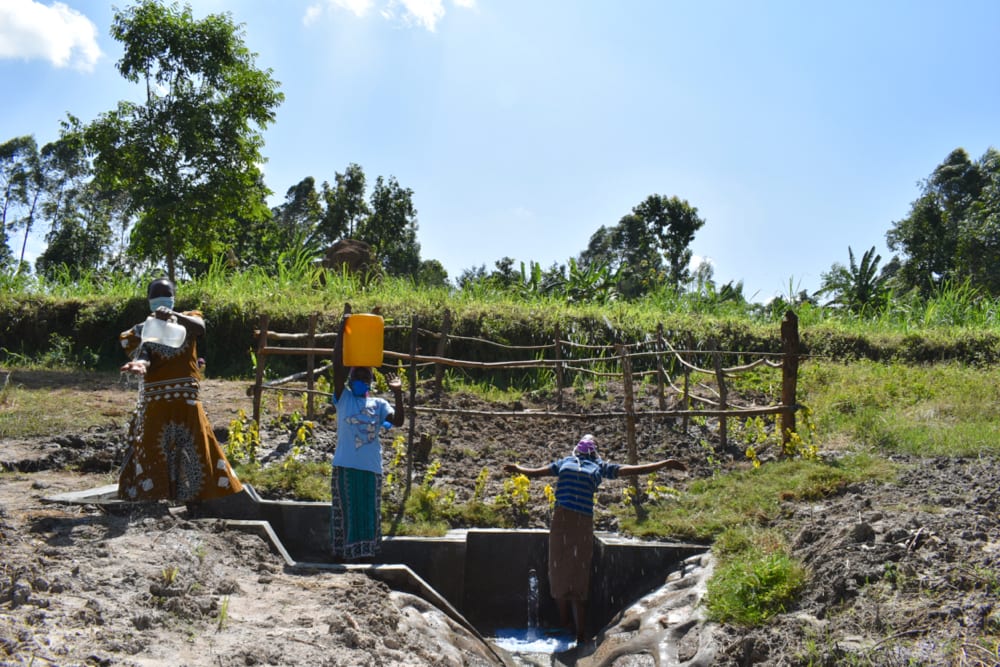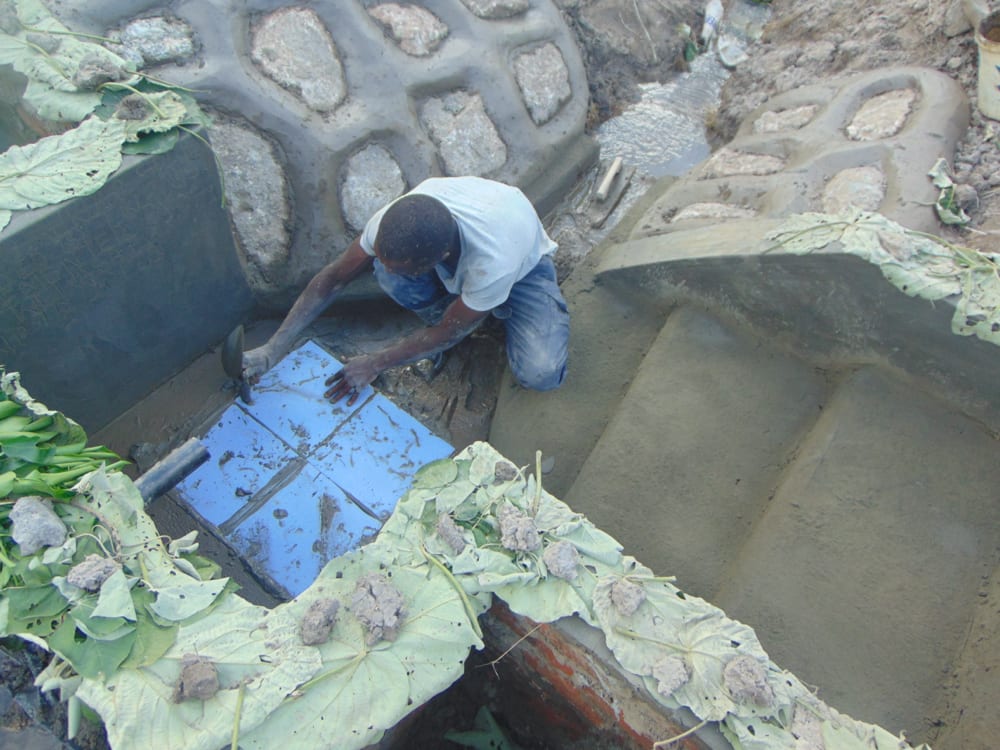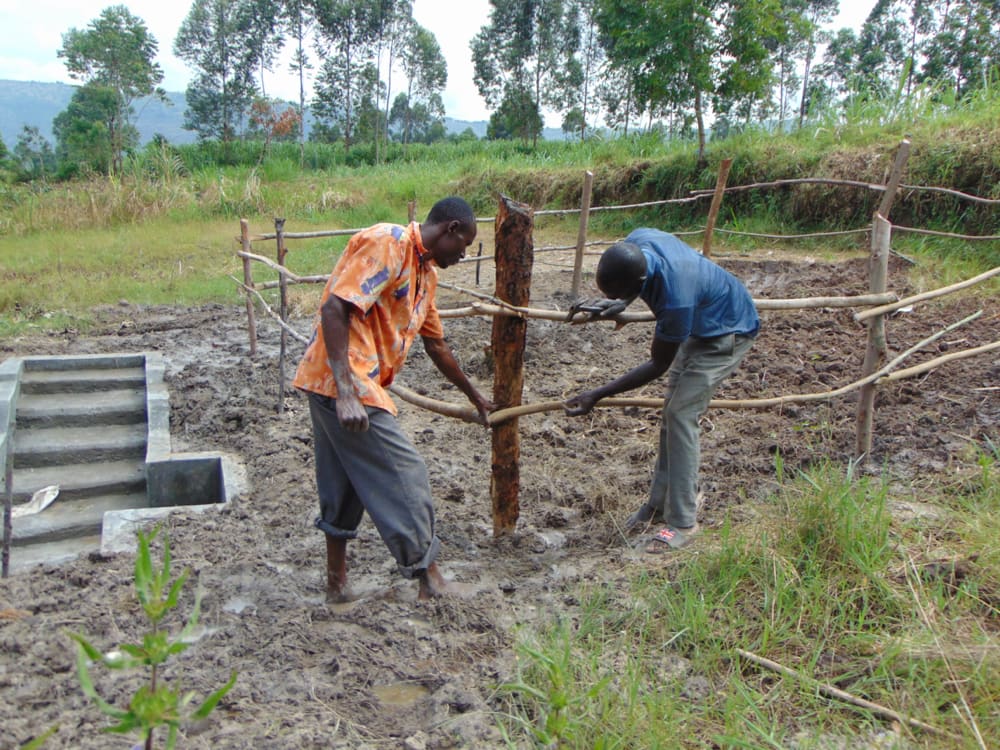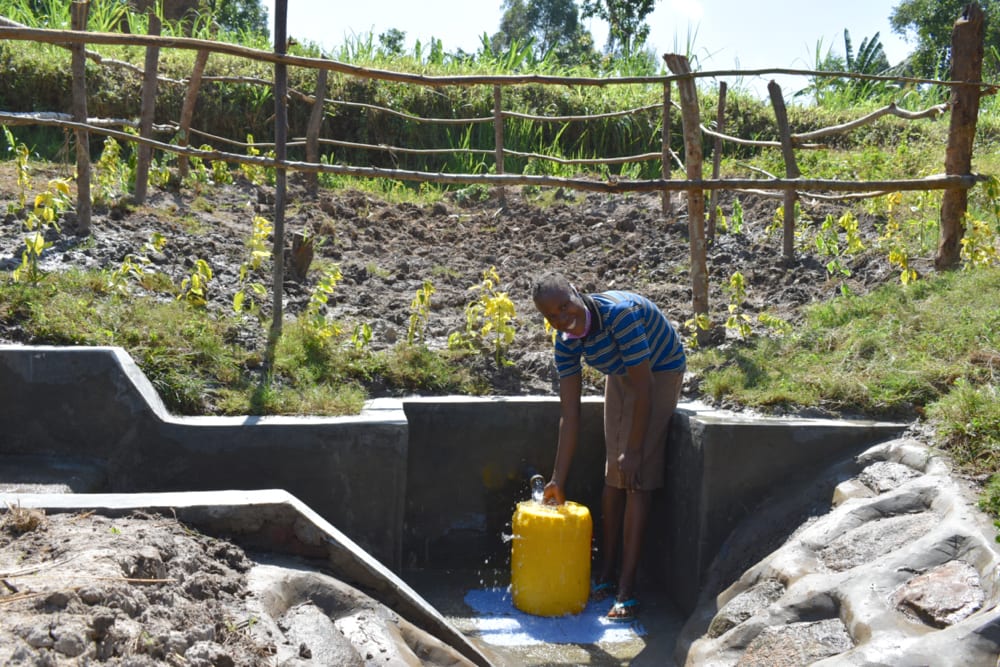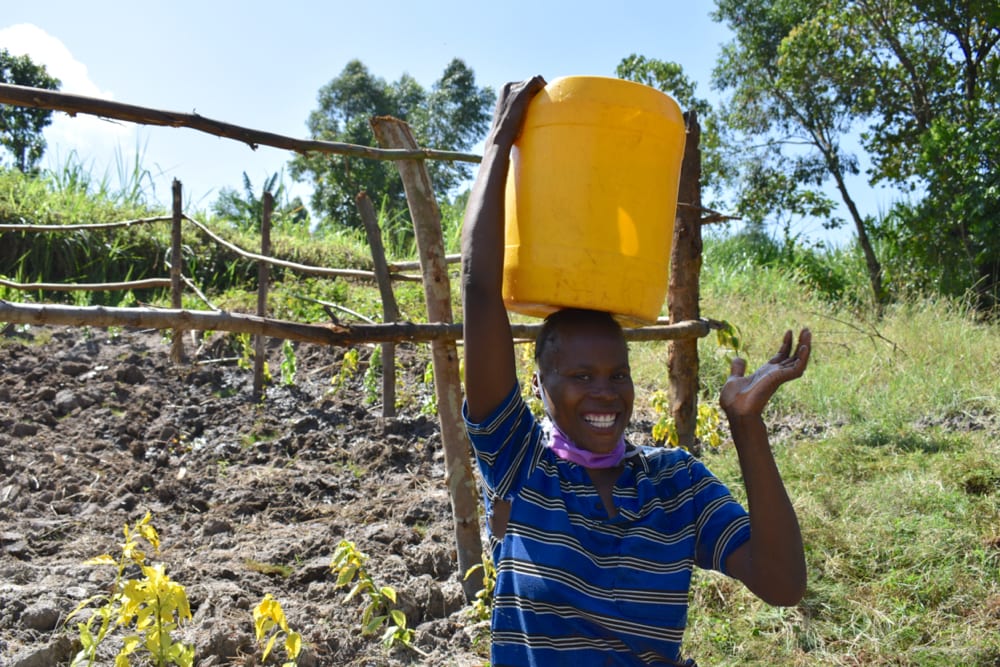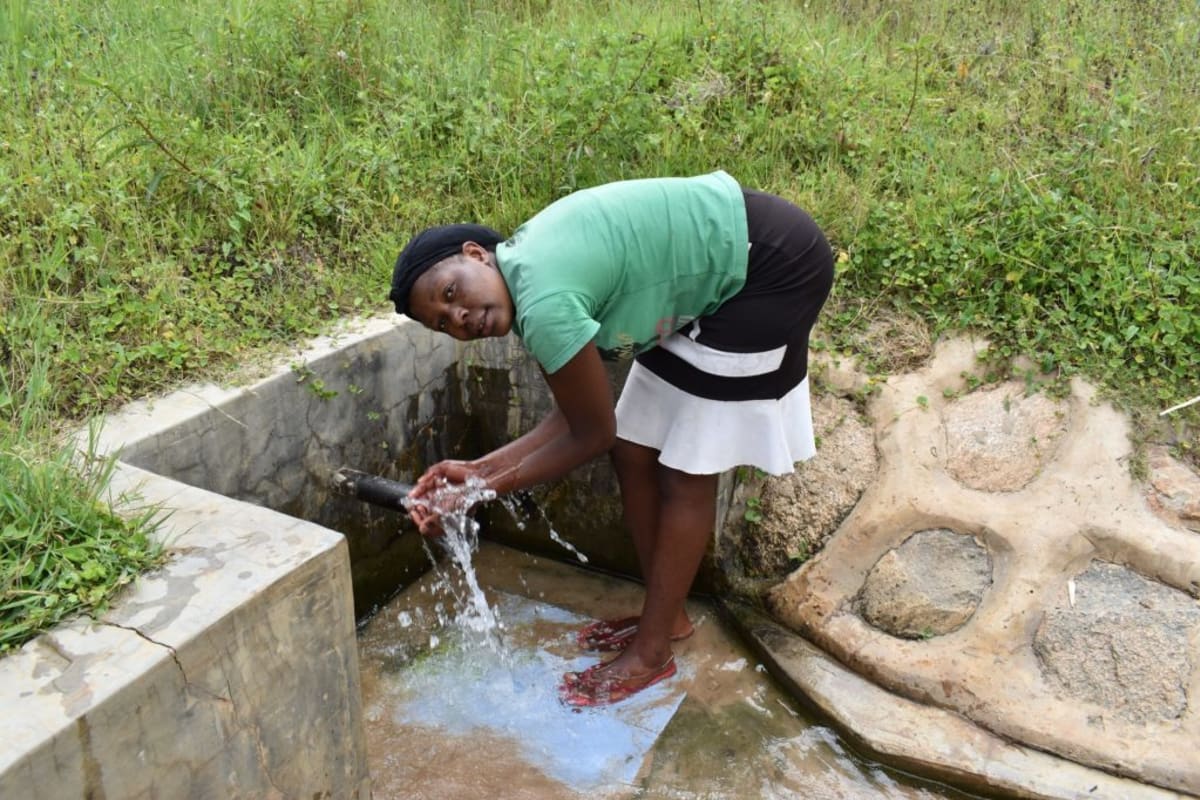The Machemo area is very green. Households are made mostly of semi-permanent structures with iron sheet roofs. Some of their floors are made of mud, while others are cement. The roads are rocky and not yet tarmacked, thus making accessibility difficult during rainy seasons.
81 people in Machemo depend on Boaz Mukulo Spring for all of their daily water needs, and yet they cannot access clean and safe water from the spring. The water source is open to surface runoff, animal waste, soil erosion, and human activity which all pollute the water.
Community members report that children are primarily affected by the spring's dirty water, often contracting typhoid. Parents then have to treat their children's water-related illness, and this means the money that was to be used for other developments is diverted to medicine. Because good health is the backbone of all success and development, when an individual has a health issue, it affects all other aspects of their life. The prevalence of waterborne diseases here affects the economy of the family and also the education of the children, as kids have to stay home from school until they are better.
"Personally, the state of our water point is mainly affecting my economic stability. I have young children who are school-going and maintaining proper hygiene is a problem. During the time they are sent to fetch water, they do not consider any hygiene practice. This makes me go look for health measures like buying water guards to treat the water to make it safe for drinking," said 35-year-old farmer and spring landowner Mr. Boaz.
But not all community members can afford water treatment systems like Mr. Boaz, and the ones who can are losing precious resources doing so.
Accessibility is also an issue at the spring because the water flows through the soil; there is no pipe available to help in easy access. Community members have tried to implement a pipe using a banana stalk, but it frequently gets washed away, and it carries its own algae and growths on it that contaminate the water. The area surrounding the spring is slick with mud and water, and sometimes people - especially kids - fall in while trying to fetch water.
"What affects me most is how to get water easily from this point. At times, when you slide you find yourself in water and mud. In the morning hours and evenings, the water is dirty and this makes it difficult to fetch. You need to wait for a long time so that it can settle," said young adult Lavin.
The process to fetch water at the spring is long and frustrating, and it stirs up mud in the water no matter how careful people are. Though people try to wait to let the water settle between users, most people have to fetch water at the same time in the mornings and evenings. It seems the mud and crowds are inevitable, the latter of which is particularly concerning during the pandemic when community members are trying to avoid groups and limit their time spent in public.
What We Can Do:
Spring Protection
Protecting the spring will help provide access to cleaner and safer water and reduce the time people have to spend to fetch it. Construction will keep surface runoff and other contaminants out of the water. With the community’s high involvement in the process, there should be a good sense of responsibility and ownership for the new clean water source.
Fetching water is a task predominantly carried out by women and young girls. Protecting the spring and offering training and support will, therefore, help empower the female members of the community by freeing up more of their time and energy to engage and invest in income-generating activities and their education.
Training on Health, Hygiene, COVID-19, and More
To hold trainings during the pandemic, we work closely with both community leaders and the local government to approve small groups to attend training. We ask community leaders to invite a select yet representative group of people to attend training who will then act as ambassadors to the rest of the community to share what they learn. We also communicate our expectations of physical distancing and wearing masks for all who choose to attend.
The training will focus on improved hygiene, health, and sanitation habits in this community. We will also have a dedicated session on COVID-19 symptoms, transmission routes, and prevention best practices.
With the community’s input, we will identify key leverage points where they can alter their practices at the personal, household, and community levels to affect change. This training will help to ensure participants have the knowledge they need about healthy practices and their importance to make the most of their water point as soon as water is flowing.
Our team of facilitators will use a variety of methods to train community members. Some of these methods include participatory hygiene and sanitation transformation, asset-based community development, group discussions, handouts, and demonstrations at the spring.
One of the most important issues we plan to cover is the handling, storage, and treatment of water. Having a clean water source will be extremely helpful, but it is useless if water gets contaminated by the time it is consumed. We and the community strongly believe that all of these components will work together to improve living standards here, which will help to unlock the potential for these community members to live better, healthier lives.
We will then conduct a small series of follow-up trainings before transitioning to our regularly scheduled support visits throughout the year.
Training will result in the formation of a water user committee, elected by their peers, that will oversee the operations and maintenance of the spring. The committee will enforce proper behavior around the spring and delegate tasks that will help preserve the site, such as building a fence and digging proper drainage channels. The fence will keep out destructive animals and unwanted waste, and the drainage will keep the area’s mosquito population at a minimum.
Sanitation Platforms
At the end of the training, participants will select 5 families that should benefit from new concrete latrine floors called sanitation platforms. Training will inform the community and selected families on what they need to contribute to make this project a success. They must mobilize locally available materials, including bricks, clean sand, and gravel.
The 5 families chosen for sanitation platforms must prepare by sinking a pit for the sanitation platforms to be placed over. Our trainers then instruct them on how to build superstructures over their new platforms. These 5 sanitation platforms will serve as examples for the rest of the community to replicate.
All community members must work together to make sure that they continuously provide accommodations and food for the work teams throughout all stages of spring and sanitation platform construction.

 Protected Spring
Protected Spring
 Rehabilitation Project
Rehabilitation Project












